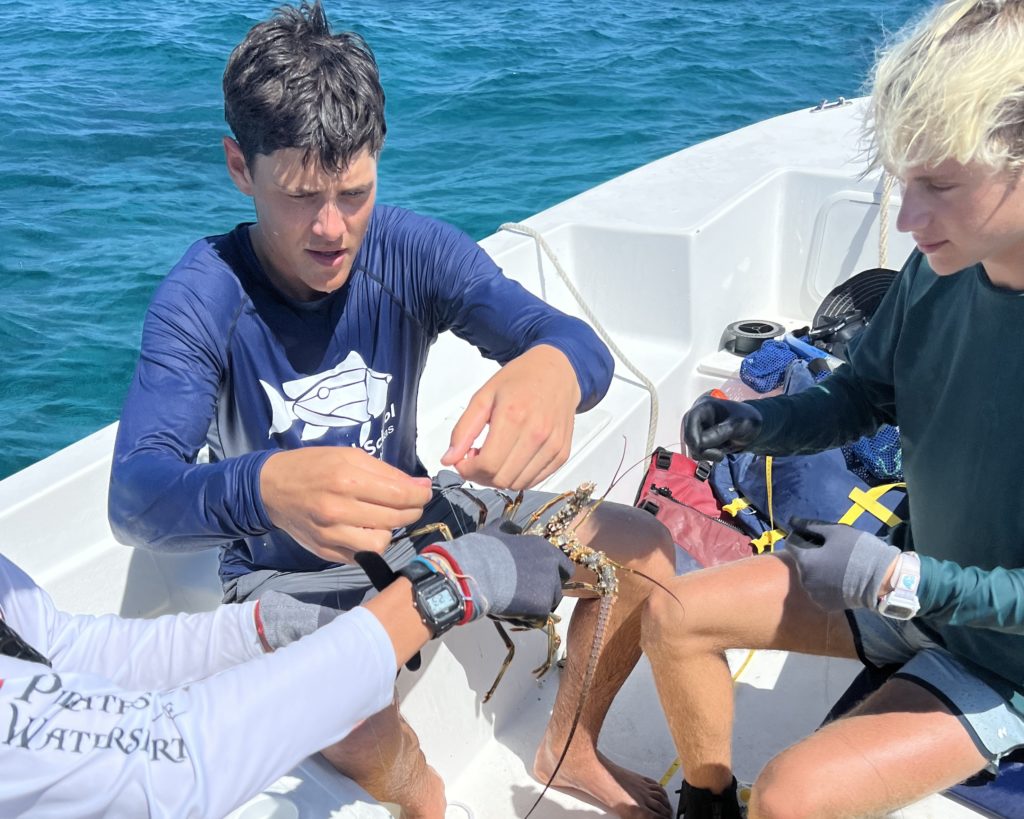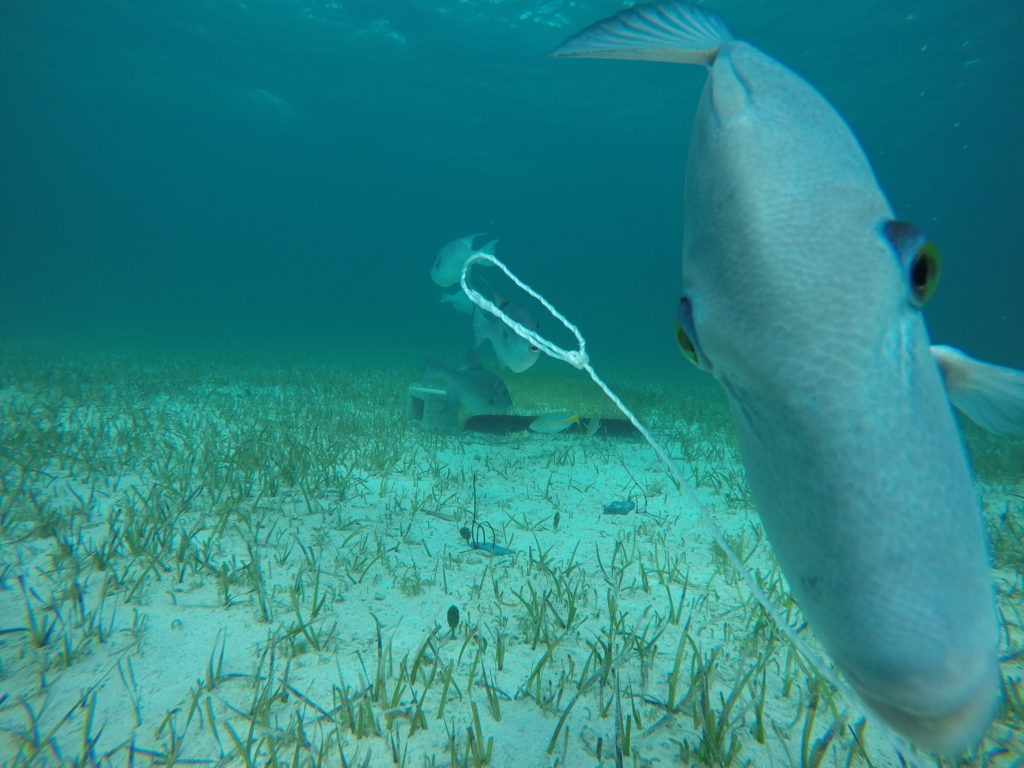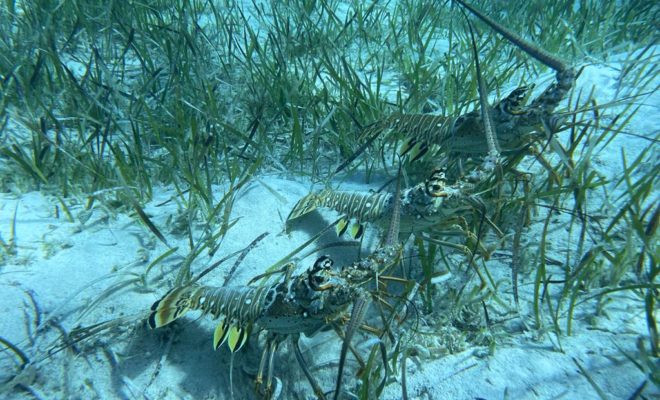BAHAMIAN SPINY LOBSTER FISHERY
Have you ever eaten a lobster tail at a restaurant like Red Lobster? If so, most likely, you have eaten a Caribbean spiny lobster tail. These tails, the most valuable export of the Bahamas, are shipped worldwide. The Bahamian lobster fishery is worth $90,000,000 and employs over 9,000 people. Over 4 million pounds of lobster tails are exported from the Bahamas yearly!
In 2018, the fishery was certified sustainable, a huge step for the future of sustainable fishing in the Bahamas. Only 14% of all fisheries worldwide have earned this certification. Adult lobsters are harvested and the illegal sub-adults are left in the casitas which are artificial shelters that are used to aggregate lobsters for ease of capture. Adult lobster tails are harvested and their heads are discarded and thrown back into the water; we are studying to see if these discards have an effect on the predators around the casitas.
OUR RESEARCH EXPERIMENT
In our experiment, we studied the effect of spiny lobster discards on the behavior of predators. We did this by observing sub-adult spiny lobsters in their casitas. Our study consisted of a control site and a discard site. At the control sites, we did not deploy any discards. At the discard site, we deployed two lobster heads tied to a dive weight and placed by the casita.

At both sites, we tethered a sub-adult lobster to a cinder block and swam it down to the casita. When we reached the bottom, the lobster was placed near the opening of the casita so that the animal had plenty of room to move. Then we set up a GoPro next to the opening of the casita and collected the data from the GoPro footage. The most frequent and active predator we observed was the Triggerfish. They were observed swimming around the casitas and eating the discards.
WHAT WE FOUND
Through our investigations, we found out that lobster discards attracted many predators such as triggerfish to casitas, but did not affect the mortality of the tethered lobsters.

This is important because there are over 3,800 tonnes of lobster heads thrown overboard on fishing boats yearly. Further research in this area is important because the fishery could be having a significant impact on lobsters and predator distribution, which could change the ecosystem in unknown ways.
By: Kai Chometa, Azalea Vitaz, Will Emery, Brooke Ward, Hudson Weathington, Emmet Marshall, Caroline Jennings
ACKNOWLEDGMENTS
Thank you: Dr. Nick Higgs | Julia Kichorowsky | Alex Smith | Koo Delany | Lucia Yanuzzi | Dining Hall Staff | Boathouse Staff
